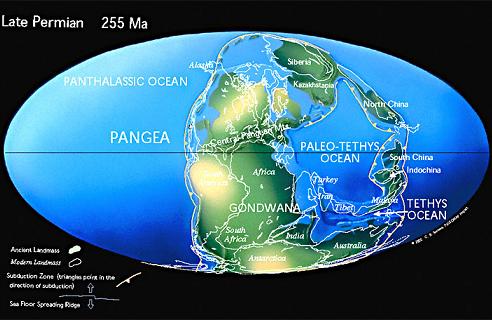
home
| Causes: Plate Tectonics |
It was originally believed that the end Permian extinction was due to the formation of the super continent Pangaea and the resulting reduction of available shallow reef space and introduction of formerly separated taxa into a common environment. (Valentine, 1972) Additionally, early research indicated a large sea-level regression coinciding with the PTB. Although these ideas dominated for many years, more recent studies have shown a vastly different picture. Boundary sections described in the Kunameh formation in Kashmir, India, display evidence of a sea-level rise, shown by a general decrease of grain size up section coupled with a decrease in thickness and abundance of storm beds. Within this transgression there is a disappearance of abundant and diverse Permian benthos and the appearance of Hindeodus parvus, nektonic ammonoids and other Triassic taxa. This same pattern is observed in many other Permian–Triassic sections worldwide, suggesting a similar transgression and evidence that marine regression had little, if any, role in the end-Permian extinction event. (Hallam and Wignall, 1997) |

Figure: The continental configuration at the time of the
Permian-Triassic Boundary (Scotese, 2004)